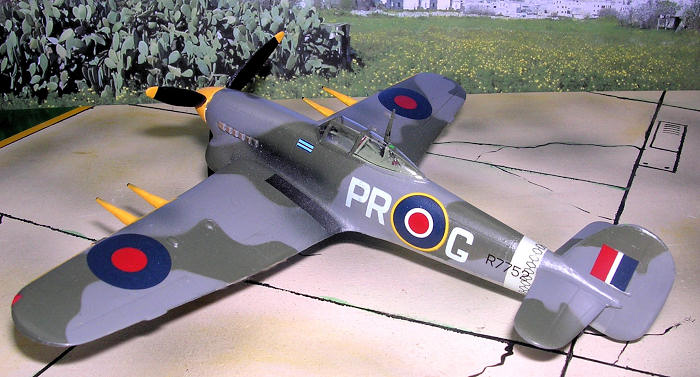
| KIT #: | 72044 |
| PRICE: | $ |
| DECALS: | Three options |
| REVIEWER: | Carmel J. Attard |
| NOTES: | Short run with resin and vacuformed plastic parts |

| HISTORY |
Back in 1937 the Hawker Company’s
chief designer Mr.Sidney Camm started work on a new project that was to replace
the Hurricane. The Sabre in-line engine being developed by a Napier and Sons
firm was to provide power to the new fighter design. The Sabre was a big water
cooled 24 cylinder horizontal H-engine having power exceeding 2,000hp and the
Air Ministry specification required a heavily armed fighter with this driving
unit.
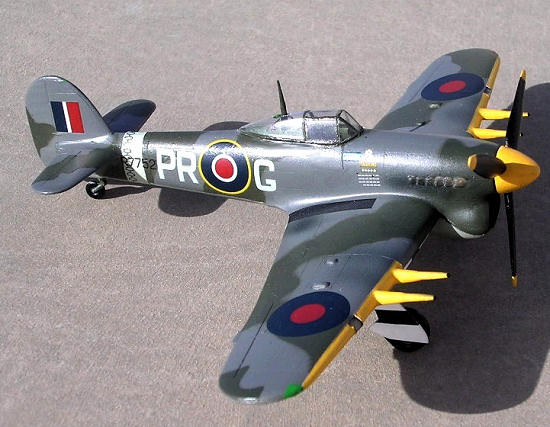
| THE KIT |
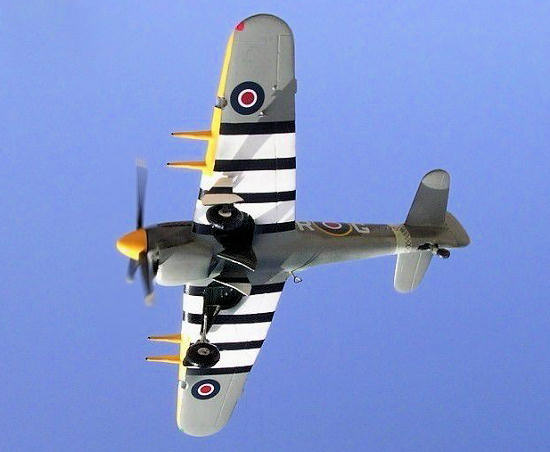 The Typhoon released by Pavla
Models is yet another interesting type that complement the Typhoon and Tempest
kits that one find on the market by other kit manufacturers with a difference
that this is the ‘car door’ type version Mk1B. It is beautifully molded with
fine engraved panel lines, and fine fabric ripples on rudder, no flash and
having highly detailed cockpit canopy and wheel wells in cast resin parts. There
are three decal options; two of these are for a different cockpit canopy variant
with a raised roof blister so that one can pick the right one from the two
canopies provided. With four leading edge cannons standing out on the leading
edge it builds into a fine aggressive fighter model with two of these carry the
black and white invasion stripes under the wings.
The Typhoon released by Pavla
Models is yet another interesting type that complement the Typhoon and Tempest
kits that one find on the market by other kit manufacturers with a difference
that this is the ‘car door’ type version Mk1B. It is beautifully molded with
fine engraved panel lines, and fine fabric ripples on rudder, no flash and
having highly detailed cockpit canopy and wheel wells in cast resin parts. There
are three decal options; two of these are for a different cockpit canopy variant
with a raised roof blister so that one can pick the right one from the two
canopies provided. With four leading edge cannons standing out on the leading
edge it builds into a fine aggressive fighter model with two of these carry the
black and white invasion stripes under the wings.
| CONSTRUCTION |
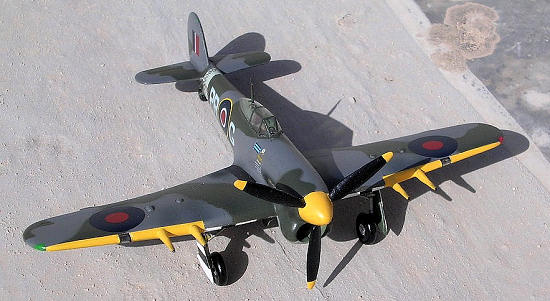 are closed. The radiator part required to be reduced in depth to
meet with rest of wing detail. The tail planes have no locating holes but have a
flat joining section surface so that they are butt jointed with no problem of
alignment. The lower wing is single mold. This needed dry fitting so that slight
trimming could be made to the locating fuselage section allowing the lower wing
part to slot correctly. Once joined to the fuselage the two upper wing halves
are simply fixed on top. Depending on which one you want to model, there are two
different gun muzzles. The two main undercarriage stage have no less than 7
separate items each making them look very detailed when put together. The
propeller spinners consist of three separate blades, which are joined to a
spinner back plate and to a front prop bonnet.
are closed. The radiator part required to be reduced in depth to
meet with rest of wing detail. The tail planes have no locating holes but have a
flat joining section surface so that they are butt jointed with no problem of
alignment. The lower wing is single mold. This needed dry fitting so that slight
trimming could be made to the locating fuselage section allowing the lower wing
part to slot correctly. Once joined to the fuselage the two upper wing halves
are simply fixed on top. Depending on which one you want to model, there are two
different gun muzzles. The two main undercarriage stage have no less than 7
separate items each making them look very detailed when put together. The
propeller spinners consist of three separate blades, which are joined to a
spinner back plate and to a front prop bonnet.
| COLORS & MARKINGS |
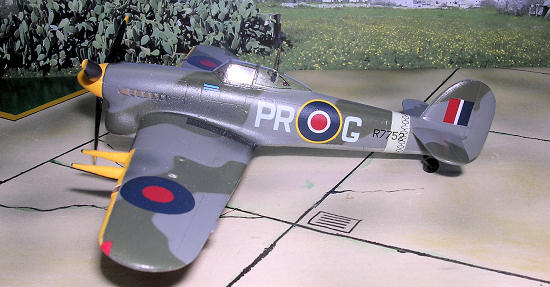 I have picked the FMk1B of 609
Squadron based at Manston. This particular Typhoon R7752, code marked PR-G saw
combat over Europe flown by Squadron Leader R.P.Beamont. At that point in time
it scored five air victories and 23 destroyed locomotives. All tallies appear on
cockpit side in form of 5 swastikas and 23 tiny locos, all provided on decal
sheet. Beamont later became a famous test pilot. The model is finished in ocean
grey and dark green disruptive camouflage to upper surfaces. A sky band too rear
fuselage. The undersides are all sea grey medium. Interior was cockpit green. I
have used Model Master paints. The completed painted model was given a coat of Klear, decals applied in place and finally given an overall coat of semi gloss
lacquer which came into a final uniform sheen finish, and absence of decal
silvering.
I have picked the FMk1B of 609
Squadron based at Manston. This particular Typhoon R7752, code marked PR-G saw
combat over Europe flown by Squadron Leader R.P.Beamont. At that point in time
it scored five air victories and 23 destroyed locomotives. All tallies appear on
cockpit side in form of 5 swastikas and 23 tiny locos, all provided on decal
sheet. Beamont later became a famous test pilot. The model is finished in ocean
grey and dark green disruptive camouflage to upper surfaces. A sky band too rear
fuselage. The undersides are all sea grey medium. Interior was cockpit green. I
have used Model Master paints. The completed painted model was given a coat of Klear, decals applied in place and finally given an overall coat of semi gloss
lacquer which came into a final uniform sheen finish, and absence of decal
silvering.
| CONCLUSIONS |
July 2011
If you would like your product reviewed fairly and fairly quickly, please contact the editor or see other details in the Note to Contributors.